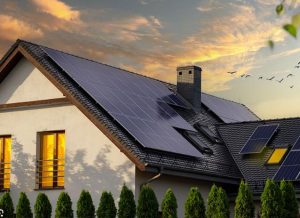Solar Wiring: Series vs. Parallel, Which is Better?
The configuration of solar panel wiring plays a pivotal role in the efficiency and effectiveness of a solar power system. Both series and parallel connections offer distinct advantages and challenges. This exploration will dive deep into the specifics of solar in series vs parallel configurations, helping you determine which setup best meets your solar energy needs.

Series Wiring: Boosting Voltage
In a series configuration, solar panels are connected end-to-end, with the positive terminal of one panel connected to the negative terminal of the next. This setup increases the system's overall voltage while keeping the current (amperage) constant.
Advantages of Series Wiring:
- Higher Voltage Output: Ideal for systems with long wire runs, as higher voltage can reduce energy loss over distance.
- Simplified Wiring: Series wiring requires fewer parallel connections, potentially simplifying the installation process.
Challenges of Series Wiring:
- Shading Sensitivity: If one panel is shaded, it can significantly reduce the output of the entire string, affecting system performance.
- Voltage Compatibility: The increased voltage must match the inverter specifications to ensure safety and optimal performance.
Parallel Wiring: Increasing Current
Parallel wiring connects the positive terminals of multiple panels together, and similarly, all the negative terminals are connected. This arrangement maintains the voltage of a single panel while increasing the system's overall current.
Advantages of Parallel Wiring:
- Increased Current Output: Essential for systems requiring more power without a need for higher voltage.
- Shade Tolerance: Panels operate independently. If one panel is shaded, it minimally impacts the overall system performance.
Challenges of Parallel Wiring:
- Thicker Cables Required: The increased current necessitates larger gauge wires to handle the load, potentially raising costs.
- Complex Wiring: More connections can complicate installation and require additional safety considerations like fuses or circuit breakers.
Comparing the Two: Series vs. Parallel
The choice between series and parallel wiring hinges on several factors:
- System Voltage and Current Requirements: Series wiring is beneficial for high-voltage, low-current setups, while parallel is suitable for high-current applications.
- Installation Space and Shading Conditions: Parallel wiring is preferable in areas with variable shading conditions.
- Distance from Panels to Inverter: Series configurations can minimize energy loss over long distances.
Solar in Series vs Parallel: Finding the Balance
Neither series nor parallel wiring is inherently better; the optimal configuration depends on your specific energy needs, installation environment, and system requirements. A combination of both wiring methods can sometimes offer the best of both worlds, balancing voltage and current to match the solar power system’s needs while mitigating the downsides of each configuration.
The Path Forward: Customizing Your Solar Solution
Understanding the nuances between series and parallel wiring is crucial for anyone looking to maximize their solar investment. By carefully considering your system's requirements and the environmental factors at play, you can choose a wiring configuration that ensures efficient, reliable solar power generation for years to come. This balanced approach underscores the adaptability of solar technology to a wide range of applications and environments, paving the way for a greener future.